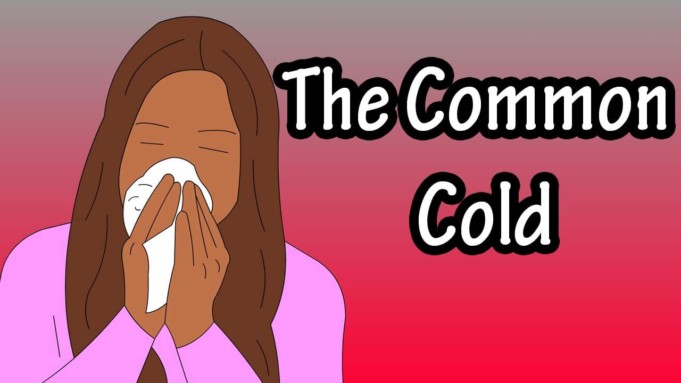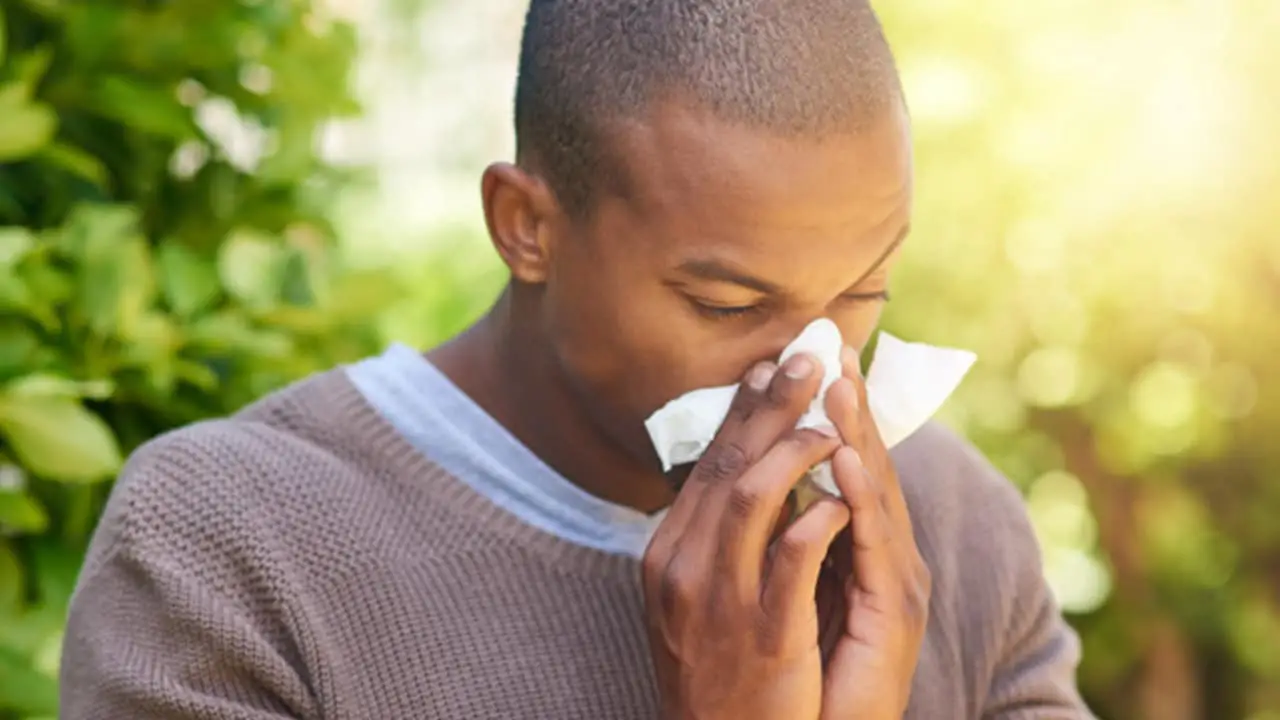The common cold is a viral disease of the respiratory tract that affects mostly the nose, throat, sinuses, and the larynx. Symptoms of the disease may include coughing, sore throat, runny nose, sneezing, headache, and fever.
These symptoms usually appear about two days after exposure to the virus, and recovery is within 7 to 10 days. Common cold may also, on occasion, lead to other conditions like pneumonia.
There are over 200 viral strains responsible for causing the disease. The common cold is a highly contagious disease that spreads through the air during close contact with infected or by indirect exposure via contact with objects in the environment.
Symptoms of the disease occur in response to the body’s immune system to infection rather than the destruction of the body’s tissues by the virus.
Although they are both respiratory illnesses and have similar symptoms, the common cold and flu are different. Two different viruses are responsible for the diseases. The similar symptoms include sneezing, body aches, runny or stuffy nose, and fatigue.
However, flu has more severe symptoms and cause other infections such as ear infections and sepsis.
Common cold, like all viral diseases, has no cure, although the symptoms can be treated. There is also no vaccine for the illness. Preventive methods include washing hands, reducing contact with sick people, and not touching eyes, nose, or mouth with unwashed hands.
The disease frequently occurs in humans. The average adult gets two or three bouts of cold annually, while children may have six to eight colds a year.
Causes of the Common cold
There are over 200 different viruses that cause the common cold, and rhinoviruses cause around 50% of colds. Other infections responsible for the illness include:
- Coronaviruses
- Human metapneumovirus
- Adenovirus
- Human parainfluenza virus
- Enteroviruses
- human respiratory syncytial virus
The virus causes the disease by attacking and overpowering the body’s immune system. The mucus – a slippery fluid produced by the nose, mouth, throat, and vagina – is the first defense mechanism of the body.
This fluid traps inhaled particulate matter, such as dust, viruses, and bacteria. When the virus penetrates the mucus, it enters the cells and then takes control and directs the cell’s machinery to create more viruses. These viruses then attack the surrounding cells.
The virus is then transmitted to others via airborne droplets, direct contact with an infected person, or via contaminated objects. The viruses may survive for periods as long as hours in an external environment, as with the case of rhinovirus. It can then be picked up by people’s hands and subsequently carried to their eyes or nose where infection occurs.
Transmission of the disease commonly occurs in the daycare and at school due to the proximity of many children with little immunity and, more often than not, poor hygiene. These infections are afterward brought home to other members of the family.
Signs and Symptoms of Common Cold
Symptoms of a cold typically begin within sixteen hours of exposure and peaks for about two to four days after onset. The symptoms are usually resolved within seven to ten days, but some can last for up to three weeks.
The symptoms of a cold are;
- Sore throat
- Mild headache
- Low-grade fever
- Blocked nose
- Runny nose
- Sneezing
- Cough
- Dry throat
- Hoarse voice
- Water eyes
- Swollen lymph nodes
Other symptoms include:
- Shivering
- Exhaustion and fatigue
- Pink eye
- Loss of appetite
- Muscle aches
The symptoms of the common cold differ from one person to another. Some people may not suffer the symptoms, perhaps due to how their body’s immune system reacts to the virus.
Risk factors
The following factors can increase one’s chances of getting a cold
- Age: Infants and children below six years old are at the highest risk of colds, especially if they spend time in daycare settings.
- Weakened immune system: A chronic illness or a compromised immune system increases your risk of getting a cold.
- Smoking: The risk of catching a cold is high and more severe if a person is exposed to cigarette smoke.
- Time of year: Both adults and children are susceptible to colds in cold weather.
- Exposure: Contact with many people, especially in public settings, increases one’s chances of being exposed to the virus that causes the infection.
Diagnosis
It is not always necessary to seek a doctor’s attention to diagnose a cold. You can diagnose yourself if you are able to recognize your symtoms.
However, if symptoms persist after about seven days, you may need to see your doctor. It may be that you have another condition with similar symptoms, such as the flu.
A cold is expected to resolve itself out in about a week to 10 days. The virus that causes the flu may take the same amount of time to disappear entirely, but if symptoms are getting worse after the fifth day, or if they’ve not gone in a week, it is possible that you may have developed another condition.
The only sure way to know if the symptoms are due to a cold or the flu is to have your doctor run several tests. Only proper diagnosis would be able to differentiate between the common cold and flu symptoms.
Complications
The complications that may arise due to the common cold include
Pneumonia
This is a condition where the lungs, particularly the alveoli (air sacs) are inflamed, filling it with fluid. The causal agents of pneumonia can be either a virus or bacteria. However, the virus responsible for the common cold does not cause pneumonia.
Bacterial agents are responsible for pneumonia caused by the common cold. When this occurs, antibiotics may be prescribed. Symptoms of pneumonia include chest pain, cough, fever, and breathing difficulties.
Acute Bronchitis
This occurs when the bronchi in the lungs are inflamed as a result of either a viral or bacterial infection. Antibiotics can be used to treat this if a bacteria is the cause of the disease. If it is viral, the symptoms would be treated as antibiotics cannot work on a virus.
Symptoms of acute bronchitis include shortness of breath, coughing, wheezing, and sputum.
Acute Bacterial Sinusitis
This occurs sinuses are infected with bacteria. Nasal and oral decongestants are used to treat the symptoms of this condition.
However, antibiotics are administered to treat the condition and to prevent further infection, which could lead to other conditions, such as bacterial meningitis.
Symptoms include headache, runny nose, and aching sinuses.
Treatment
Antibiotics and antiviral medications have no effect against most viruses that cause the common cold. A cold lasts typically up to 10 days, although some symptoms can stay as long as three weeks.
The following methods may help ease the symptoms:
- Drink plenty of fluids and keep yourself well hydrated. Being dehydrated while being infected with a cold could exacerbate the disease.
- It is vital to get as much rest as possible while the immune system is fighting off the virus.
- Painkillers like aspirin, paracetamol, acetaminophen, or ibuprofen can help to relieve a headache or fever.
- Some people find that inhaling steam helps ease the symptoms of nasal congestion.













